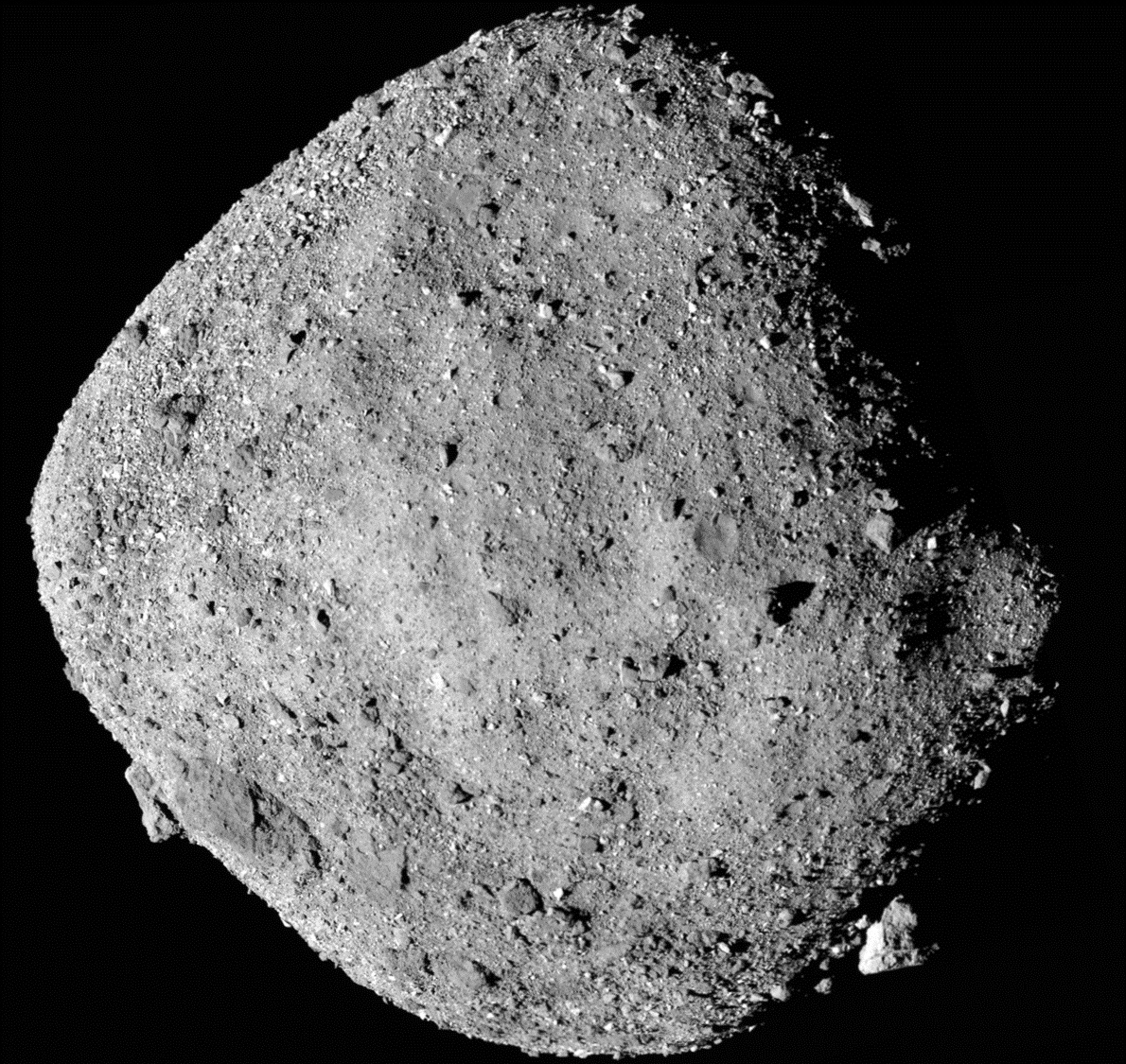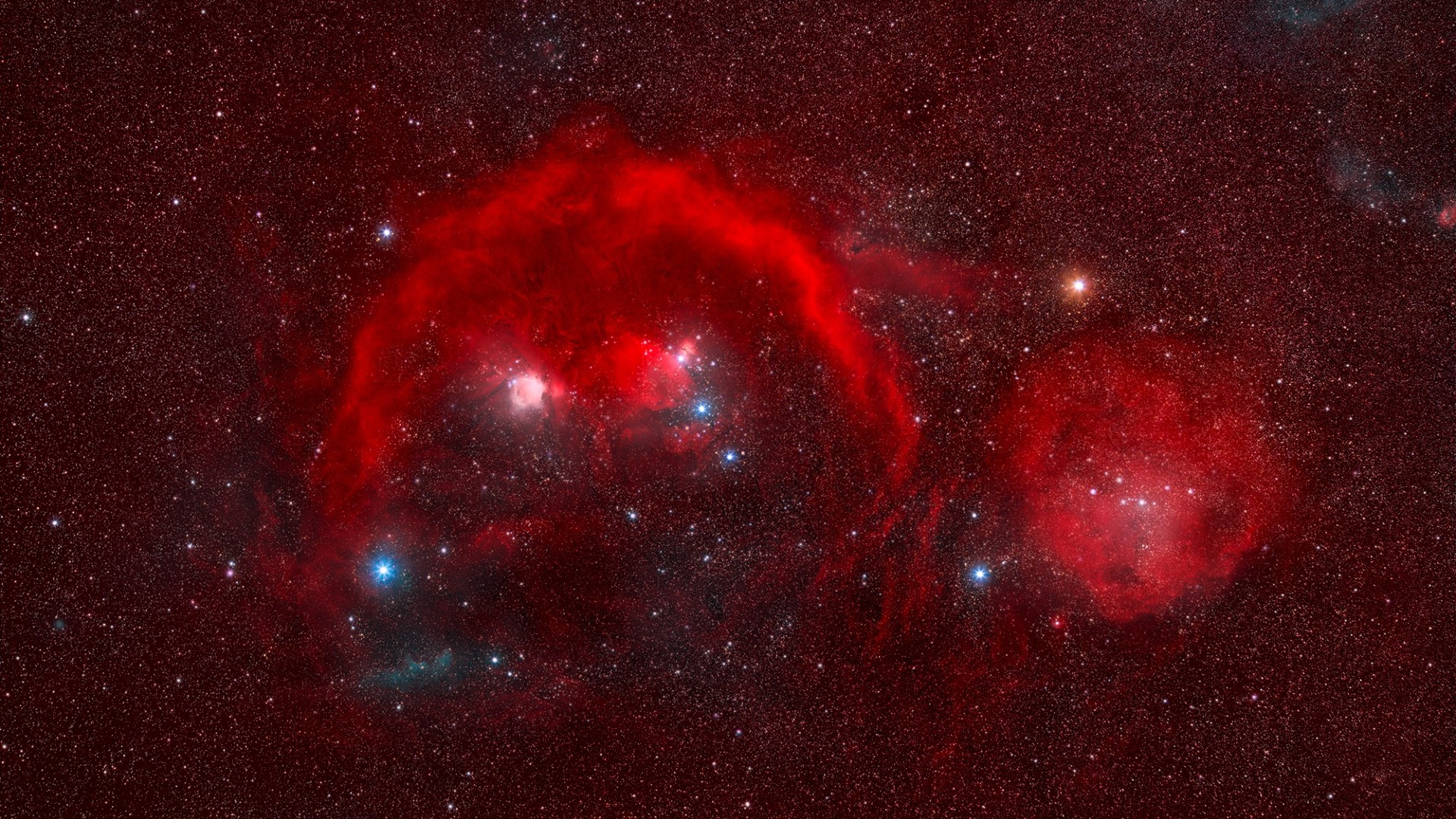
A NASA asteroid-sampling probe has begun circling its space-rock target, setting a new record for the smallest body ever orbited by a spacecraft.
The OSIRIS-REx probe achieved orbit around the 1,640-foot-wide (500 meters) near-Earth asteroid Bennu with an eight-second engine burn today (Dec. 31) at 2:43 p.m. EST (1943 GMT).
"The team continued our long string of successes by executing the orbit-insertion maneuver perfectly," Dante Lauretta, OSIRIS-REx principal investigator at the University of Arizona, said in a statement. "Entering orbit around Bennu is an amazing accomplishment that our team has been planning for years." [OSIRIS-REx: NASA's Asteroid Sample-Return Mission in Pictures]
OSIRIS-REx officially arrived at Bennu on Dec. 3. For the last four weeks, mission team members have been taking the space rock's measure, nailing down the object's mass and mapping out its shape in great detail.
Such work was required before attempting orbital insertion because "maneuvering around a small body that basically has no gravity is a very challenging endeavor," OSIRIS-REx Deputy Principal Investigator Heather Enos, also of the University of Arizona, told Space.com earlier this month. "So, we do have to get a little more information to proceed every step of the way."
Before today, the smallest object to be circled by a probe was the 2.5-mile-wide (4.1 kilometers) Comet 67P/Churyumov-Gerasimenko, which the European Space Agency's Rosetta probe orbited from 2014 to 2016. (The asteroid Itokawa, which was visited by Japan's Hayabusa mission in 2005, is smaller than Bennu. But Hayabusa never actually went into orbit around Itokawa. And Japan's Hayabusa2 mission is taking a similar tack at the 3,000-foot-wide, or 900 m, asteroid Ryugu — basically, flying along with the space rock rather than circling it.)
OSIRIS-REx also set a new mark today for the closest orbit of a small body. The probe is now circling about 1 mile (1.6 km) from Bennu's surface, mission team members said.
Breaking space news, the latest updates on rocket launches, skywatching events and more!
The $800 million OSIRIS-REx mission — whose name stands for "Origins, Spectral Interpretation, Resource Identification, Security-Regolith Explorer" — launched in September 2016. Its main goal is to help researchers better understand the solar system's early days, and to shed light on the role that carbon-rich asteroids such as Bennu may have played in helping life get started on Earth (by delivering water and organic molecules to our planet long ago).
Much of this information will come from analyses of pristine Bennu material here on Earth. OSIRIS-REx will swoop down to grab a sizeable sample of asteroid dirt and gravel in mid-2020, and this stuff will land softly under parachute in the Utah desert in September 2023. (Hayabusa2 has similar objectives, and it's a sample-return mission as well. The Japanese probe's return capsule is scheduled to land in December 2020.)
"With the navigation campaign coming to an end, we are looking forward to the scientific mapping and sample site selection phase of the mission," Lauretta said.
OSIRIS-REx will also make contributions in other ways. For example, the mission should increase scientists' understanding of the resource potential of Bennu-like asteroids and help fine-tune the trajectories researchers draw up for potentially dangerous space rocks, NASA officials have said. (Bennu itself is in this class; there's a very small chance that it will hit Earth in the late 22nd century.)
OSIRIS-REx's orbital insertion was the first of two big spaceflight events occurring within a span of mere hours. NASA's New Horizons spacecraft will zoom past the small object Ultima Thule at 12:33 a.m. EST (0533 GMT) Tuesday (Jan. 1), performing the most-distant planetary flyby in history.
Ultima Thule is about 4 billion miles (6.4 billion km) from Earth — 1 billion miles (1.6 billion km) beyond Pluto, which New Horizons visited in July 2015.
Editor's note: A previous version of this story incorrectly stated that the asteroid Ryugu had been the smallest celestial body ever orbited by a spacecraft. But Japan's Hayabusa2 probe has never entered a closed orbit around Ryugu.
Mike Wall's book about the search for alien life, "Out There" (Grand Central Publishing, 2018; illustrated by Karl Tate) is out now. Follow him on Twitter @michaeldwall. Follow us @Spacedotcom or Facebook. Originally published on Space.com.
Join our Space Forums to keep talking space on the latest missions, night sky and more! And if you have a news tip, correction or comment, let us know at: community@space.com.

Michael Wall is a Senior Space Writer with Space.com and joined the team in 2010. He primarily covers exoplanets, spaceflight and military space, but has been known to dabble in the space art beat. His book about the search for alien life, "Out There," was published on Nov. 13, 2018. Before becoming a science writer, Michael worked as a herpetologist and wildlife biologist. He has a Ph.D. in evolutionary biology from the University of Sydney, Australia, a bachelor's degree from the University of Arizona, and a graduate certificate in science writing from the University of California, Santa Cruz. To find out what his latest project is, you can follow Michael on Twitter.
